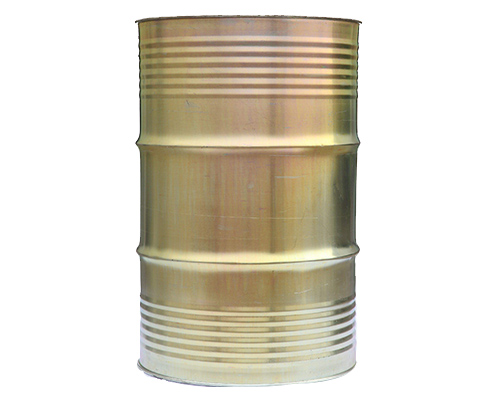Yingkou Hengyang New Energy Chemical Co., Ltd.
Address: Xianren Island Energy and Chemical Zone, Yingkou City, Liaoning Province, via the west side of the Fourth Road
Zip code:115200
Telephone:18241754999
Fax:0417-6775999
E-mail:1313264@qq.com
Website:en.yingkouhengyang.com
With the technology of methyl ethyl carbonate, our company is developing new products and projects of upstream and downstream series with the core of dimethyl carbonate products with well-known universities and research institutes in China. The details are as follows:
1. Projects of LPG Producing Gasoline and Aromatics
The company intends to adopt new technology to produce olefins and gasoline from low-carbon hydrocarbons such as liquefied gas. Gasoline is sold directly to the outside world. The olefins are separated into propylene oxide or ethylene oxide. Propylene carbonate or vinyl carbonate, propylene carbonate or carbon are produced by the reaction of propylene oxide or ethylene oxide with carbon dioxide from recovered exhaust gas. Vinyl acid ester reacts with methanol to produce the final product dimethyl carbonate.
2. New Energy: Secondary Lithium Solvent (Electrolyte)
Relying on existing ester products such as dimethyl carbonate, the company has successfully developed a series of new products and new materials of electronic grade carbonate through deep processing with proprietary technology, mainly including electronic grade dimethyl carbonate (DMC), diethyl carbonate (DEC), methyl ethyl carbonate (MEC), vinyl carbonate (VC), propylene carbonate. (PC), vinyl carbonate (EC), tetramethylammonium bicarbonate (TMAHC), etc., the above products are the main components of high performance secondary lithium ion battery electrolyte.
Lithium-ion batteries have been developed rapidly due to their high working voltage, small size, no memory effect, no pollution, small self-discharge and long cycle life. They are ideal secondary energy resources for the key development in the 21st century. They belong to the development projects encouraged in the national industrial restructuring guidance catalogue. In 2007, the National Torch Plan gives priority to the development of technology. In the technical field and several key projects, it is clearly pointed out that "new energy conversion and storage devices represented by high-performance lithium-ion batteries must be developed to meet the needs of the booming information technology industry for high-performance, long-life and low-cost mobile energy."
Lithium-ion batteries are currently mainly used in mobile electronic consumer products such as mobile phones, laptops, cameras, cameras, MP3, MP4, power tools, electric bicycles and so on. New uses, such as electric vehicles and large-scale energy storage batteries, are accelerating their development. With the rapid growth of national energy demand, the sustained growth of related industries and the strengthening of environmental protection, lithium-ion batteries with green environmental protection and high performance will grow rapidly as electronic products, electric vehicles, large capacity batteries for peak load regulation of power plants and batteries for emerging industries. It is the current and future development of battery synthesis. The direction of lithium battery industry promotes the steady development.
3. New Materials: Polycarbonate Project
Polycarbonate (PC) is a odorless, odorless, non-toxic and transparent amorphous thermoplastic material. It has outstanding impact resistance, creep resistance, high tensile strength, flexural strength, elongation, rigidity, good heat resistance and cold resistance. It can be used at temperatures ranging from - 100 to 140 C with excellent electrical properties. Good, low water absorption, good light transmittance, visible light transmittance of about 90%, PC can also be blended with other polymers to form alloys, performance can be further improved.
Polycarbonate (PC) is the only kind of engineering plastics with good transparency. It is famous for its high impact strength, outstanding toughness, excellent electrical insulation, wide temperature and dimensional stability. Therefore, PC is widely used in electronic appliances, electric tools, transportation, automobiles, machinery, meters, buildings, etc. Textile, information storage, medical devices, sports goods, aerospace, security, national defense and military industry, as well as computers, optical fibers, optical discs and other industrial fields.
The traditional synthesis method of polycarbonate is phosgene method, which uses phosgene and bisphenol A to polymerize. The raw materials used in this method are extremely toxic, the process is complex, the equipment is corroded, the environment is polluted, and the product contains chloride ions, which reduces the product quality and limits the application field. This method is facing elimination.
Polycarbonate Clean Process Industry Chain: Starting from the basic chemical raw material methanol, carbon dioxide, propylene carbonate, dimethyl carbonate, bis (trichloromethyl) carbonate and bisphenol A. The whole process meets the goal of clean production, and by-product phenol can be recycled.
In the polycarbonate industry chain, methanol, carbon dioxide, propylene carbonate, dimethyl carbonate and BIS (trichloromethyl) carbonate and other products are all produced by our company, and the scale and technology of the products are in the leading position in the same industry.
